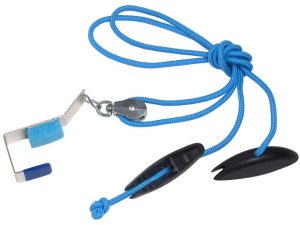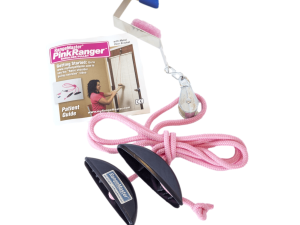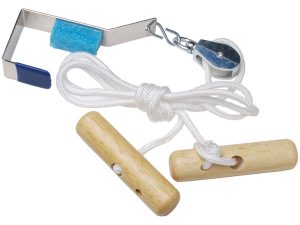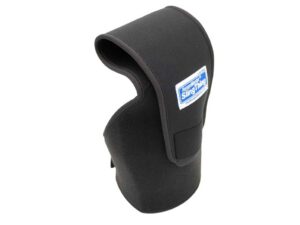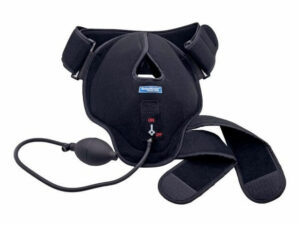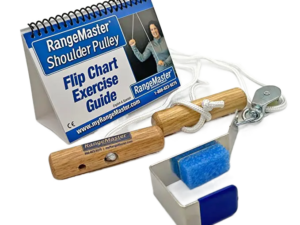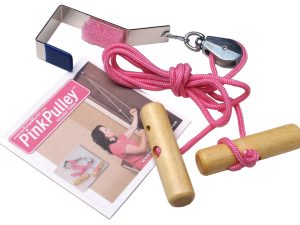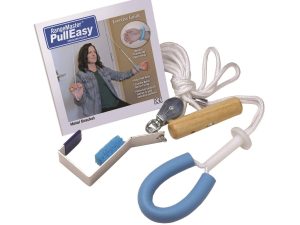As you’re recovering and gradually regaining shoulder range of motion, you might find it challenging to jump from passive stretching to active movement.
This is where active assisted range of motion comes into play.
Keep in mind, you need to have full passive range of motion if you want to be able to regain full active range of motion.
The muscles are in a more relaxed state with a passive motion, but must actively work to support the shoulder girdle during active range of motion.
When recovering from an injury or surgery, the muscles are not always willing participants to begin actively working again. They usually need a little outside help to be able to get back to that fully active state again.
A wand is a perfect tool for just that.
Today, let me take you through a couple different positions to use the wand for regaining shoulder flexion.
1. Step 1: Starting Position:
Lying on your back:

- Lie on your back on your bed, couch or floor.
- Hold the wand with both hands. Make sure the hands are in a direct line with the shoulders.
- You can have the legs extended out in front of you or bent with the feet flat on the surface.
- Rest the wand on the legs to begin with.
Seated or Standing Upright:

- Position yourself in an upright position in sitting or standing.
- Keep the shoulders back with a nice, tall posture.
- Hold the wand with both hands. Make sure the hands are in a direct line with the shoulders.
- Rest the wand on the legs to begin with.
2. Step 2: Shoulder Flexion with the Wand:
Lying on your back:

- Keep the shoulder blades engaged by squeezing them down and back, bracing into the surface you’re on.
- While maintaining straight elbows, slowly raise the arms up towards the ceiling.
- Continue back as far as the shoulders can tolerate.
- Hold for 5 seconds, then return to your starting position.
- Repeat 10x.
Seated or Standing Upright:

- Actively squeeze the shoulder blades down and back while seated upright.
- While maintaining straight elbows, slowly raise the arms up towards the ceiling.
- Continue raising the arms overhead as far as the shoulders can tolerate.
- Hold for 5 seconds, then return to your starting position.
- Repeat 10x.
Key Points:
When trying this exercise for the first time, begin lying down on a surface. This will help to support the back and shoulder girdle more as you initiate this active assisted motion.
Once this becomes easy, then you can progress to practicing in an upright position, which requires the back and shoulder girdle to more independently support themselves.
The level of assist the healthier shoulder provides depends on how limited and painful the injured shoulder is.
Higher pain levels and restrictions will require greater assist. In a case such as this, the healthier side should start out doing ~75% of the work, while the injured side tries ~25%.
Lower pain levels and fewer restrictions won’t require as much assistance. In a case such as this, the healthier side can start doing 25-50% of the work, with the injured side tries 50-75%.
You can absolutely adjust the level of assist based on the needs of your specific shoulder injury.
Give this one a try at home!

